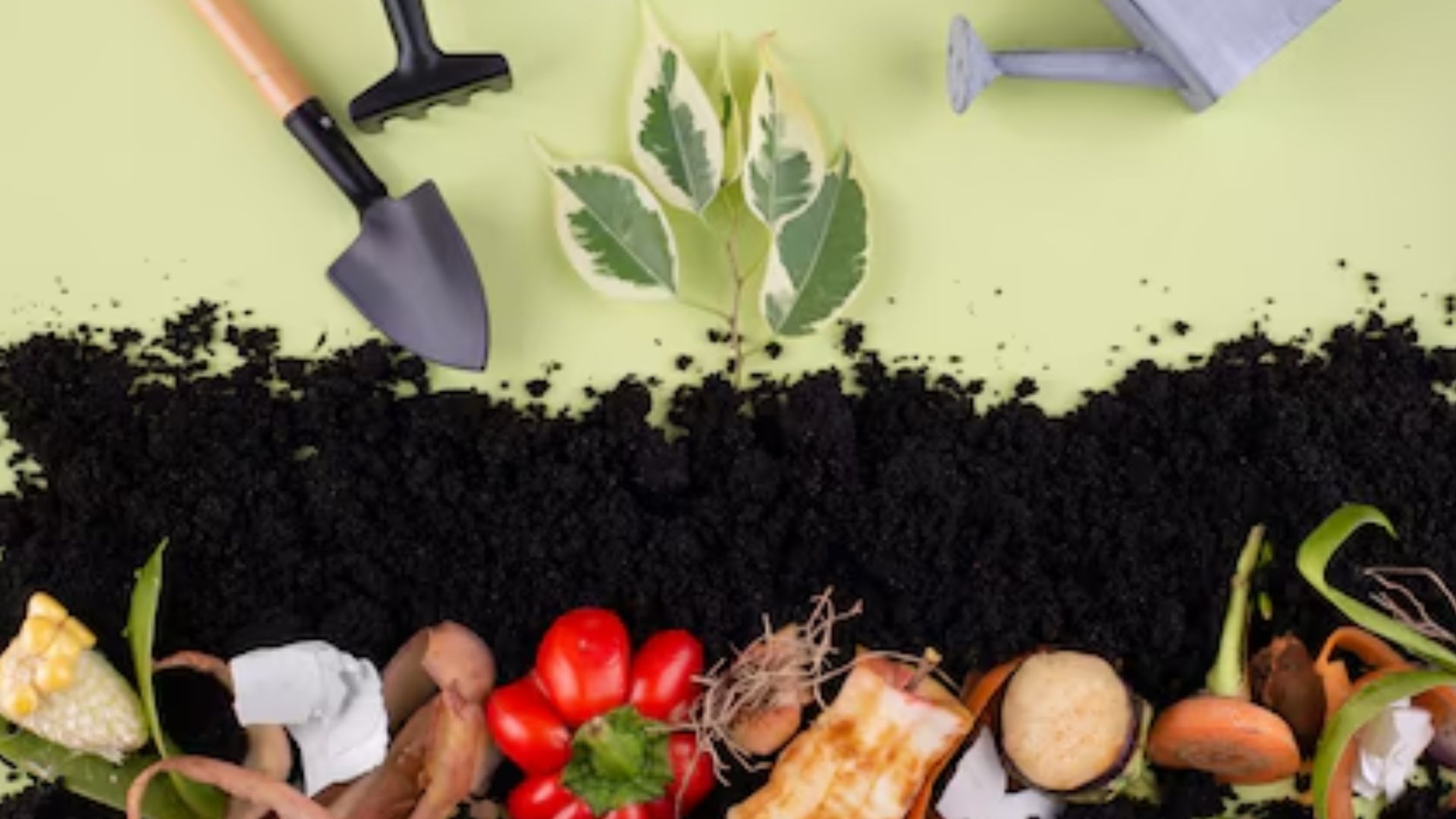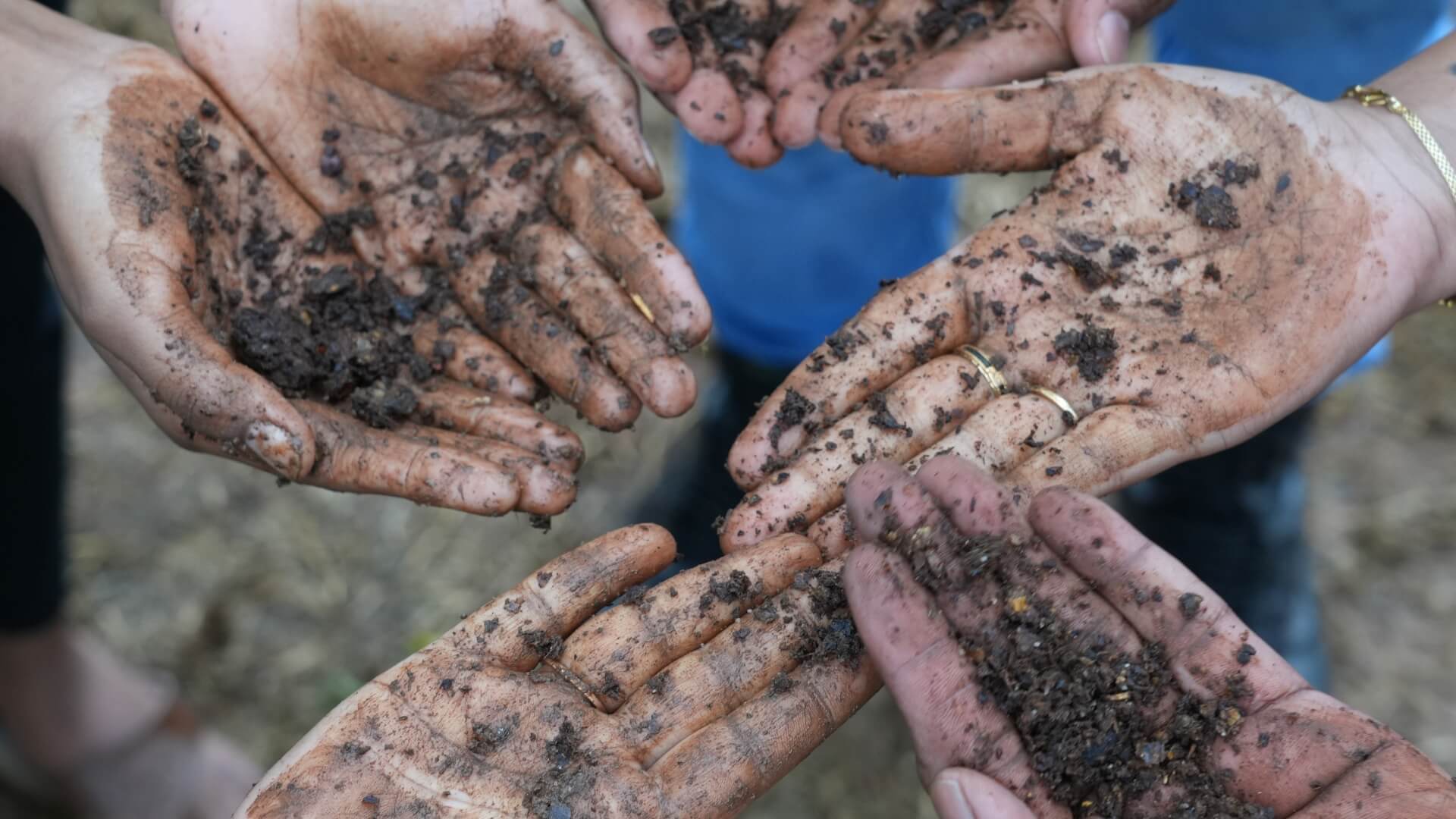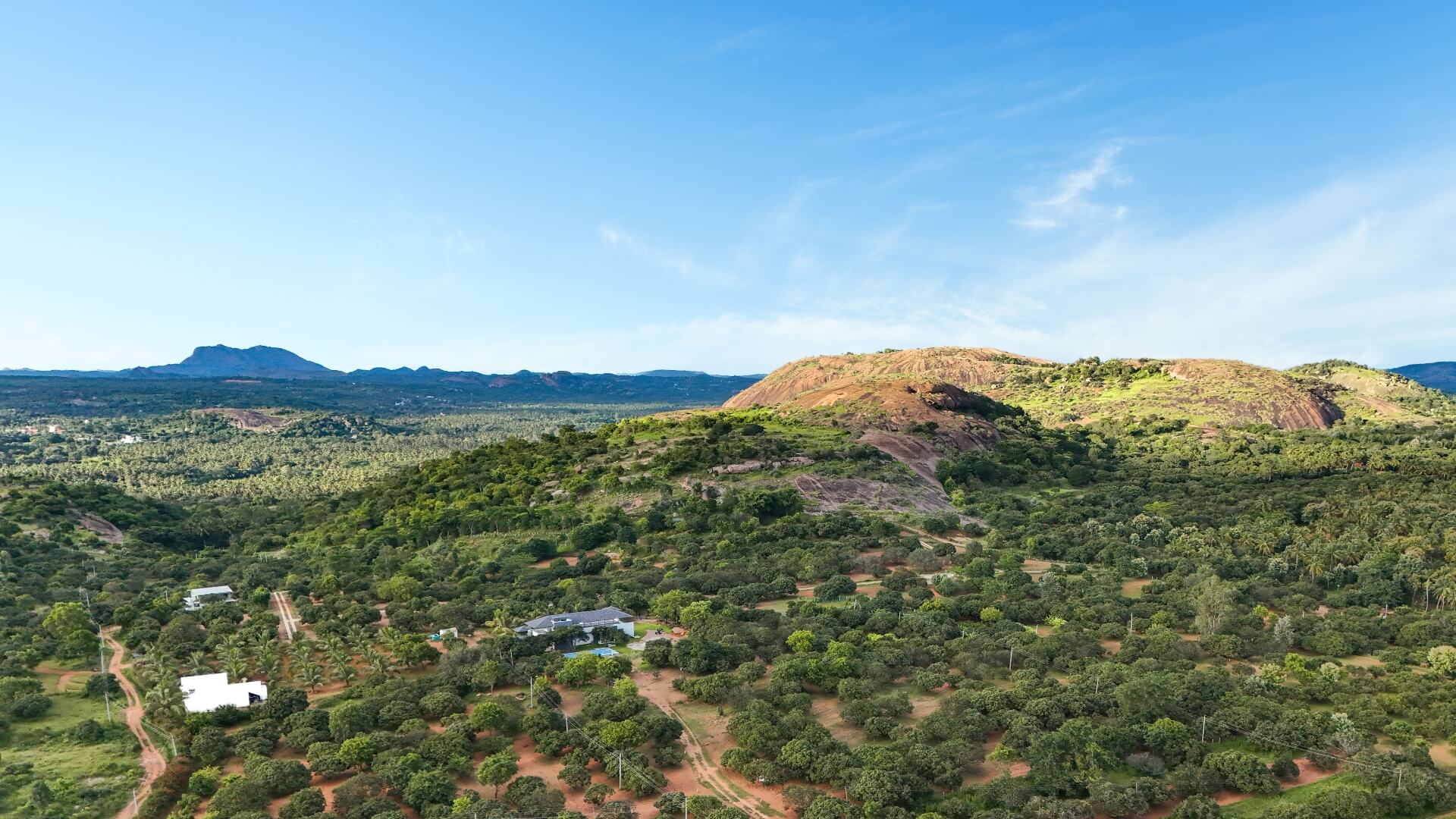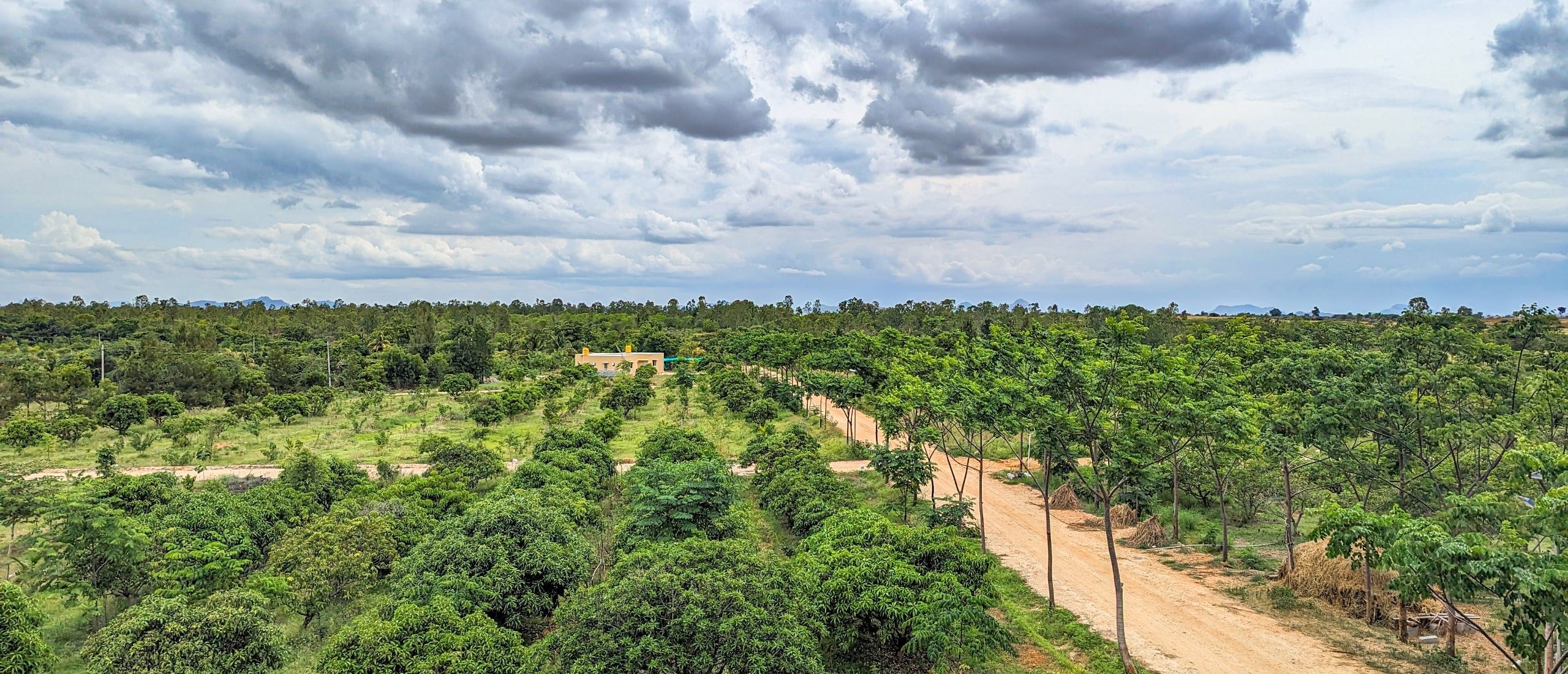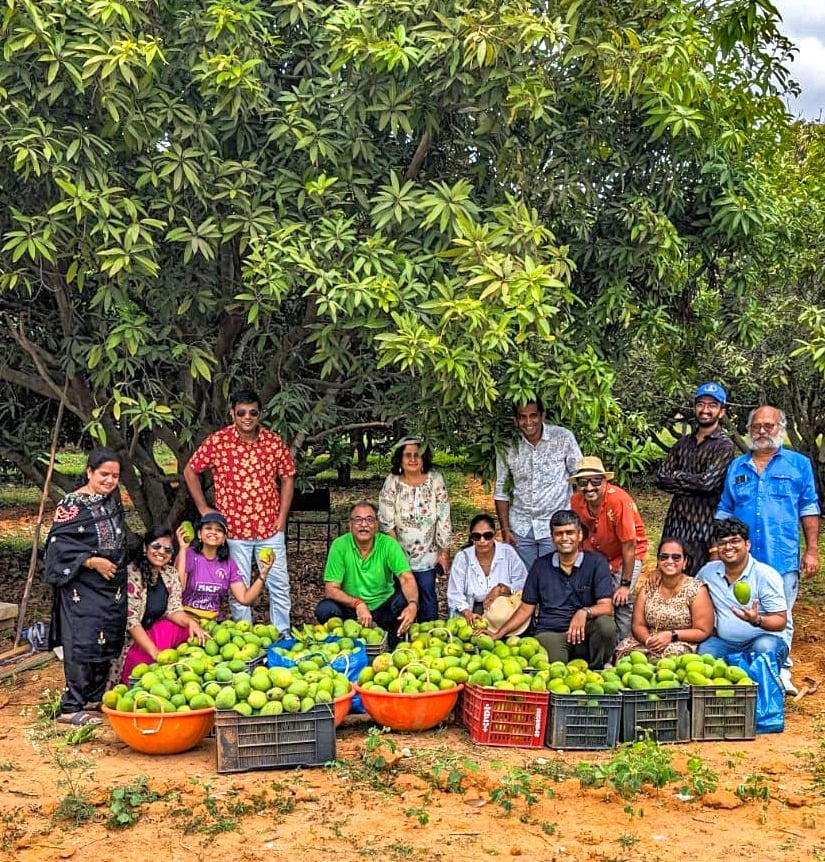December 30, 2023
Srinivas Abhilash
5 Minute Read
Introduction
Soil teems with life, primarily in the form of tiny microbes only visible through a microscope. These billions of microorganisms are essential for the soil’s health and productivity.
Their tasks are numerous: they compete with harmful microbes, fix nitrogen, turn organic matter into humus, break down nutrients for plants, and produce protective antibiotics. These microbes serve as nature’s nutrient factories, providing plants with all the necessary elements for growth.
The soil food web comprises a diverse network of organisms, both large and small, working in unison to nurture plants and maintain soil health. Central to this web is humus, crafted by microbes through the decomposition of deceased plants and animals.
Humus plays a pivotal role in supplying nutrients to plants, improving soil structure, and enhancing water retention. It captures carbon from the air, forming a chain of carbon molecules that enrich the soil and give it a darker hue.
Acting as a hub for carbon storage, humus retains water, and hosts air, microbes, and nutrients, providing an optimal environment for plant roots. As it gradually decomposes, it enriches the soil, boosting fertility and supporting the entire ecosystem.
On the other end, above the ground, plants, through photosynthesis, produce sugary exudates that attract specific beneficial microbes to their roots. These helpful microbes, including bacteria, fungi, archaea, etc adjust soil pH and deliver necessary nutrients, residing in the root zone to break down nutrients for easier plant absorption. Consequently, the soil surrounding roots becomes more fertile, fostering robust plant growth.
This interconnection between organic matter breakdown by soil organisms and nutrient release from plant exudates underscores the vital and interdependent nature of the soil food web, crucial for sustaining healthy plant life.
Disturbing the soil food web, by tilling, harms vital organisms, while chemicals can be detrimental to these soil inhabitants. Hence, it’s our responsibility to preserve this delicate ecosystem that sustains our food and contributes to planetary temperature regulation.
The Soil Food Web Approach: Revitalizing Soil Health Naturally
At Hosachiguru Managed Farmlands, we use regenerative farming techniques that are inspired by and based on Permaculture principles and ethics.
Our approach is centered and focused on the restoration of soil health using nature’s mechanisms to create large-scale agro and food forests, particularly through the Soil Food Web Approach. This methodology involves the participation of tiny organisms dwelling in the soil, working wonders to rejuvenate the soil and foster better plant growth.
Dr. Elaine Ingham, a renowned expert in soil biology, emphasizes on her website, www.soilfoodweb.com, that the Soil Food Web Approach is the key to swiftly and effectively regenerating soil health. She also emphasizes that the complete soil food web holds the power to restore the soil’s innate functions, not only preserving clean water but also combating climate change and yielding highly nutritious foods.
These microorganisms are very crucial in fortifying soil structure and preventing erosion caused by wind and rain. They also break up compacted soil, enabling water and plant roots to delve deeper, promoting healthier plant growth and increased productivity.
This intricate system allows plants to adeptly manage their nutrient intake by utilizing natural minerals present in the soil. Consequently, they develop resilience against pests and weeds without relying on harmful chemicals.
Reviving the soil food web allows farmers to discard costly treatments. This thriving web, alongside natural farming practices, removes the need for pesticides as well. This natural balance promotes plant health, reducing water usage in irrigation and minimizing extensive plowing, leading to savings for both the environment and finances.
So, how can this be achieved? It’s simple!
- Start by identifying which soil organisms are lacking
- Bolster their numbers using natural compost and relevant concoctions and liquids
- Finally, implement natural farming techniques to nurture their growth
The outcome? An enriched environment that promotes superior plant growth while conserving resources and reducing expenses.
Keep Things Aerobic
Maintaining an oxygen-rich environment in the soil is also key for the health of the soil food web and plants. Good oxygen levels benefit essential microorganisms like bacteria and fungi. They break down organic matter, making valuable nutrients that plants use for growth.
This process also improves soil structure and fertility, helping it hold onto water and nutrients, which plants need to thrive. Keeping soil aerobic prevents harmful bacteria from growing. These harmful ones develop in low-oxygen (anaerobic) conditions and can harm plant roots and overall soil health.
At Hosachiguru, we foster a welcoming environment for beneficial soil organisms by ensuring proper soil aeration, preventing waterlogging, and adding organic dry and wet mulch to each plant and tree. This helps maintain the microclimate, retains soil moisture, and supports a healthy soil food web, leading to better soil for productive plant growth.
Soil Food Web Seasons
Just like above-ground ecosystems, the soil food web experiences seasonal changes that influence its dynamics and functions.
| Season | Soil Activity | Key Participants | Environmental Impact |
| Spring | Kickstarts with increased moisture | Microorganisms, bacteria, fungi, earthworms | Warmer temperatures, increased moisture initiates soil activity |
| Summer | Peak activity, thriving microbes | Thriving microbes, helpful predators | Warmer months sustain maximum soil productivity |
| Fall | Activity slows, leaf decomposition | Some active organisms, earthworms | Cooling temperatures, fallen leaves contribute to ongoing breakdown |
| Winter | Decreased activity | Dormant organisms, slow-working microbes, cold-adapted organisms | Colder climate slows microbial activity, insulation protects soil |
These seasonal shifts impact nutrient cycles, soil structure, and overall soil health. Understanding these changes helps guide better soil management practices for farmers and gardeners throughout the year.
Soil Food Web Hierarchy
The soil food web is structured hierarchically, showcasing the interconnected relationships between various organisms in the soil. Here’s an easy-to-understand representation:
| Trophic Level | Examples | Description | Output for Plants |
| Primary Producers | Plants, Algae | Produce energy through photosynthesis. | Sugars, Oxygen |
| Decomposers | Bacteria, Fungi, and Insects | Break down organic matter, releasing nutrients like nitrogen, phosphorus, and potassium. | Nitrogen, Phosphorus, Potassium |
| Primary Consumers | Protozoa and nematodes | Consume organic matter and release nutrients such as nitrogen, potassium, and phosphorus. | Nitrogen, Potassium, and Phosphorus |
| Secondary Consumers | Predatory Nematodes and mites | Control populations of lower trophic levels and release amino acids, proteins, and micronutrients. | Amino Acids, Proteins, and micronutrients |
| Tertiary Consumers | Predatory Mites Centipedes, and Beetles | Regulate the soil ecosystem and release complex organic compounds and micronutrients. | Complex Organic Compounds and micronutrients |
| Detritivores | Earthworms and some Insects | Break down organic debris and release nutrients like nitrogen, phosphorus, potassium, and calcium. | Nitrogen, Phosphorus, Potassium, Calcium |
Conclusion
The soil beneath our feet holds the key to not only nurturing our crops but also nurturing our health. There’s a profound connection between the soil microbiome and our gut microbiome. We are not just what we eat; we are also what our food ate/eats. This highlights the critical importance of understanding and nurturing the soil food web.
When plants grow in soil teeming with a healthy and diverse soil microbiome, they flourish, absorbing a 360-degree array of nutrients – both macro and micro. This nutrient-rich produce becomes our food, offering us a bounty of health benefits with every bite.
It’s a ripple effect – when we consume food grown in such enriched soil, our gut microbiome gets replenished, revitalized, and rejuvenated. Every meal becomes an opportunity to strengthen our immune systems and promote overall well-being. Focusing on nurturing a quality soil food web and robust soil microbiome is, therefore, paramount.
As Hippocrates wisely said, “Let your food be your medicine, and your medicine be your food.” By prioritizing the quality of the soil where our food grows, we pave the way for a holistic approach to health.
Improving the health of our gut biology through the consumption of nutrient-rich produce is not just a dietary choice; it’s a lifestyle that enhances our well-being. As we invest in the health of our soil, we inadvertently invest in the health of ourselves and our communities.
Let’s embrace this symbiotic relationship between the soil, our food, and our health. Together, let us prioritize the soil food web, and let’s make every meal a step toward a healthier, happier future.
























